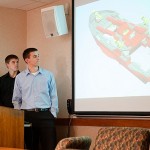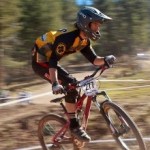by Jenn Donovan, public relations director
Mercury Marine, a longtime corporate partner of Michigan Tech, has donated a laser interferometer to Michigan Tech’s Department of Mechanical Engineering-Engineering Mechanics. The piece of equipment, valued at approximately $125,000 when new, uses a laser to produce digital images of the amount of strain that parts undergo as they are stressed in various ways.

